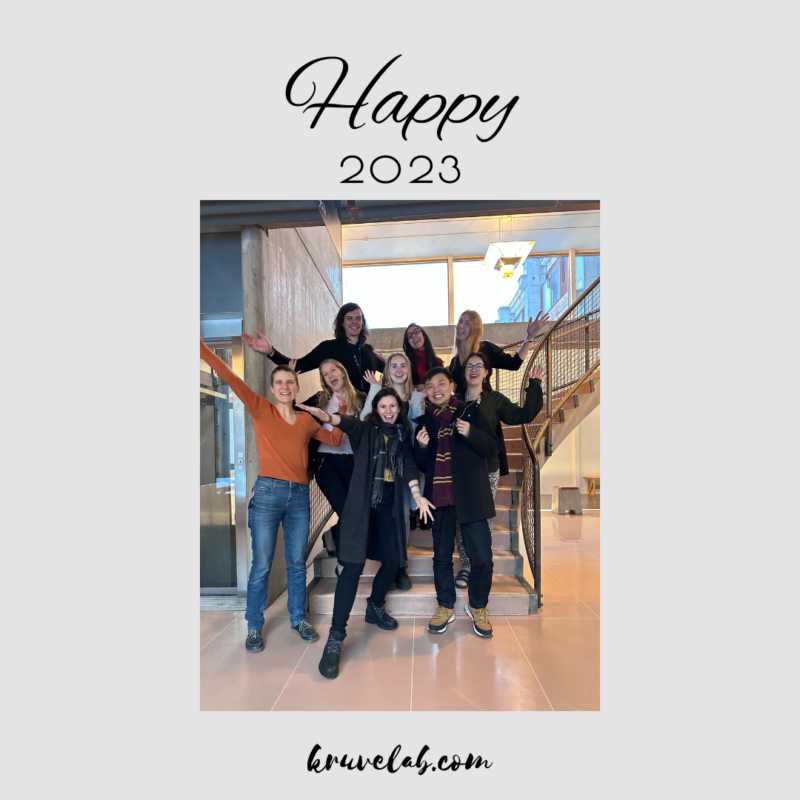As I am writing this, 2022 is approaching its last hours, and it is high time for a throwback to the year, my friends, and a bit of peaking into the upcoming 2023.
2022 was a very fruitful year for Kruvelab. Since I moved to Stockholm University in mid-2019 I have been building – with indescribable help from our students and stuff – to get the research rolling. And in 2022 I truly felt that now things have been settling into place.

In spring, six MSc students graduated in the group: Arina Ivanova, Chimnaz Emrah, Emma Palm, Lisa Jonsson, Louise Malm, and Masoumeh Akhlaqi. All of them working on the core topics of the group and much of this work has been recently submitted for publication or will be up and coming in 2023. Curious? Find out more about the MSc in Analytical Chemistry here.

Last year a number of research outputs that were initiated at SU rolled out. Firstly, the MS2Tox – a concept of predicting ecotoxicity from the empirical analytical information – developed by Pilleriin Peets was published in ES&T. Secondly, the first study taking full advantage of the capabilities of our brand new Cyclic IMS rolled out in Analytical Chemistry. Led by Helen Sepman, we investigated the gas phase properties of isomeric caffeine metabolites and were able to shed light on the tautomer and protomer formation of polyfunctional chemicals in electrospray, followed by an interrogation of the properties in the gas phase. Additionally, several works on the quantification of chemicals detected with nontarget LC/HRMS have been published around the concept of expanding ionization efficiency prediction models for new chemical classes by Sara Khabazbashi, uncertainty in quantification in collaboration with Louis Groff, Jon Sobus, etc. from US EPA, and gaining the information necessary for quantification from empirical analytical information lead by Emma Palm. We have also made our contribution to the identification of chemicals detected with LC/HRMS by expanding the retention time prediction models to a wide range of mobile phases in MultiConditionRT (Amian Souihi) and predicting sodium adduct formation probability for candidate structures (Riccardo Costalunga).
We have additionally attracted new funding and our team will be growing in 2023. Early in the year, a post-doc in SUCCeSS network will join the group to design a strategy for the sustainable derivatization reagents for sensitive LC/HRMS analysis. We are also currently advertising three positions. Firstly, a PhD student position for predicting endocrine disruptive properties for chemicals detected in nontarget LC/HRMS as part of a project supported by the Swedish Research Council (VR). Secondly, a PhD student position for designing nontarget screening to tailor materials for environmental remediation funded by WISE, Wallenberg Initiative Materials Science for Sustainability. Lastly, a post-doc position for advancing the identification of chemicals detected in nontarget LC/HRMS with self-learning strategies funded by Carl Tryggers Foundation. Please contact us for more details!
2023, bring it on!



